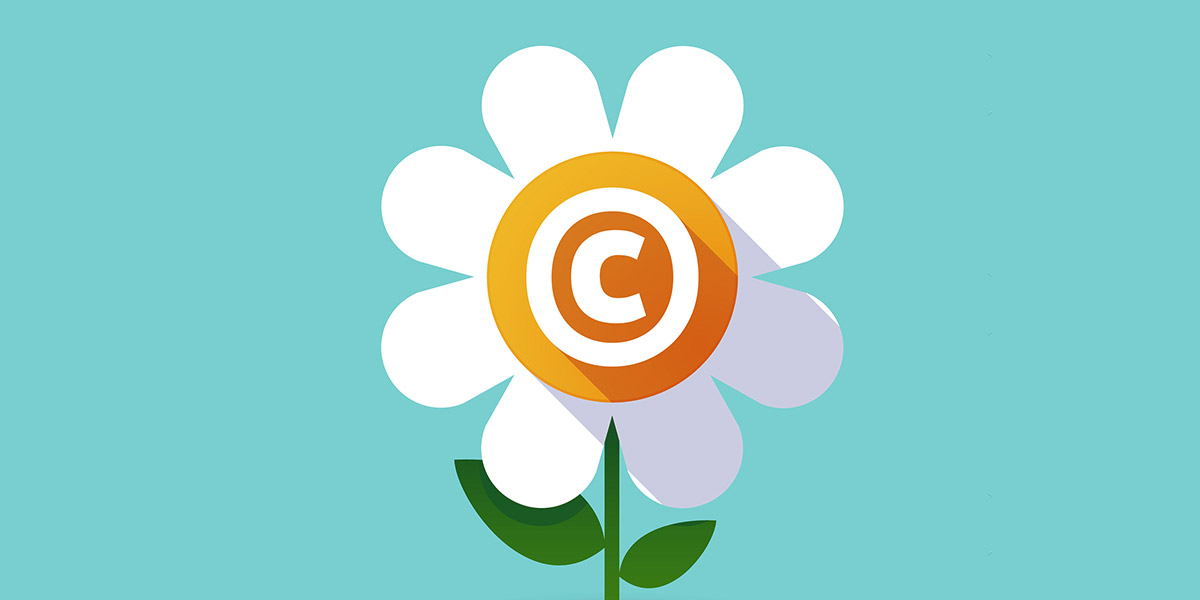
As PR pros, our jobs revolve around content. We pitch traditional media and social media influencers to create content favorable to our names, brands, and reputations. We create and market our own content. And in the spirit of community, we often share other people’s content (OPC) when we believe our external and internal audiences might find it interesting. In the midst of battle to gain exposure and influence, it’s easy to forget that the U.S. has laws governing the use of OPC, and that there can be serious consequences for those who don’t follow copyright rules.
U.S. copyright law dates from the Constitution
Search for the definition of copyright, and you’ll find that it’s “the exclusive legal right, given to an originator or an assignee to print, publish, perform, film, or record literary, artistic, or musical material, and to authorize others to do the same.” The Founders of our country included copyright in our Constitution. Article I, Section 8, gives Congress the power “to promote the progress of science and useful arts, by securing for limited times to authors and inventors the exclusive right to their respective writings and discoveries.” By protecting a creator’s economic interest in their work, our Founders ensured that innovation and creativity would thrive. (Ideas aren’t protected under copyright law, but the form or manner in which they are expressed is protected.)
In recent years, content has become more readily available thanks to the Internet. While the legal protection that copyright provides for original creative works remains as strong as ever, violations of copy rights are not unusual. Look to technology to understand why. The Internet makes it super-simple to use content with just a click. “Share” buttons appear everywhere online. We even measure the effectiveness of our PR efforts by tracking and reporting on how widely our content has been used, repurposed, or shared.
Understanding the ethics of sharing
Sharing OPC is often a good thing, unless you step on the toes of a content creator who has put a lot of time and effort into creating that content. Some content creators and distributors have a lot to lose, principally money, when their content is shared without following the rules. Think about how print, online and broadcast media operate their businesses. They pay journalists, writers and filmmakers to research, write, report, film, and transmit content. Then they rely on subscriptions and/or advertiser fees to recoup their costs and make a profit. The same applies to stock photo sites that pay photographers for the right to sell their photos.
You may also be familiar with the legal actions around music downloads in the days before Spotify and Pandora. Music lovers were using online sharing services to download music for free, without paying the publishers. The music companies ultimately filed federal copyright lawsuits and the downloaders faced huge fines. These actions effectively ended what had become a widespread practice. More recently, hundreds of thousands of individuals have been charged with copyright infringement for downloading movies without paying for them in actions known as the BitTorrent File Sharing lawsuits. Many have paid financial penalties. Under the U.S. Copyright Act, fines can be as high as $150,000 per download.
Sharing content safely
Content sharing can seem scary. Some companies have even been charged with copyright violations for sharing news content, and while settlement details are often private, some have paid large penalties. For you, the key question focuses on how you can know if it’s okay to share the content you’ve been posting on line, emailing internally, and using elsewhere in your communications.
The Copyright Act of 1976 formalized the principles of “fair use” of copyrighted works, so that’s the first place to look for guidance. Simply put, fair use permits copying of copyrighted material done for a “limited and transformative” purpose. This concept is captured in four principles, guided by these questions:
- What is the purpose and character of your use of content?
Has the material you have taken from the original work been transformed through new expression or meaning? Did you add value to the original by creating new information, new aesthetics, or new insights? A parody falls under this use. - What is the nature of the copyrighted work?
Is it a factual work or a work of fiction? You have more leeway to quote from factual works. Has it been published? Don’t use any part of an unpublished work without the author’s permission as that’s a clear violation of their right to control its first public appearance. - How much and how substantial is the portion of the work being used?
Are you using a couple of sentences from an article or whole paragraphs? A few chords of music or a melody? For fair use, less is better. Think in excerpt terms. - What is the potential effect of the use on your market?
Does your sharing the work deprive the copyright owner of income because a customer will be less likely to pay for the article or photograph you shared? And does it preclude the owner from developing a new potential market for their work? Widely sharing an entire article that was published behind a paywall is asking for trouble.
And keep this thought in mind: Attribution is not the answer to copyright compliance. Citing the source of a work will not protect the sharer from a charge of copyright infringement.
Getting a grasp of copyright basics is just the start. In an upcoming post, we’ll share more information about how PR professionals can safely create, use, and share the most common types of content.
– by Steve Shannon








